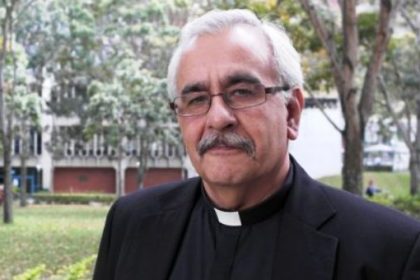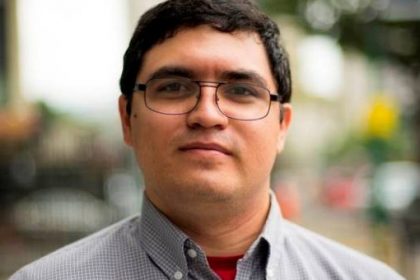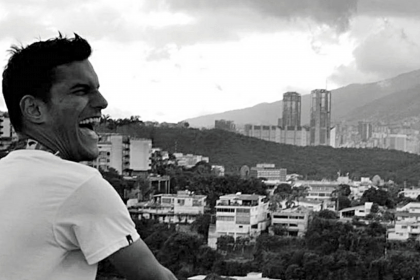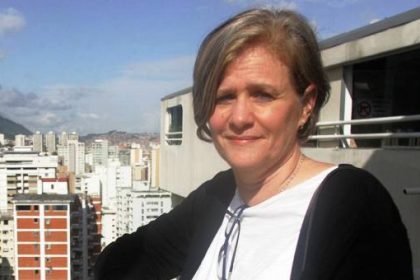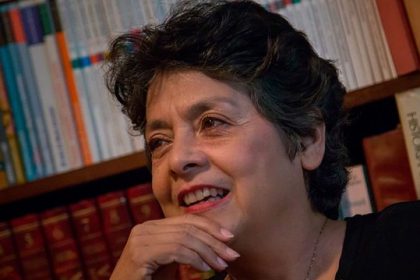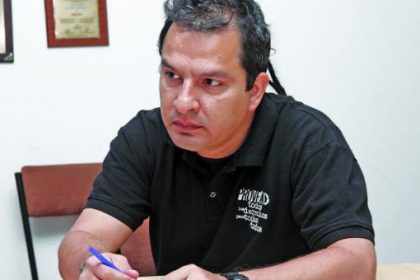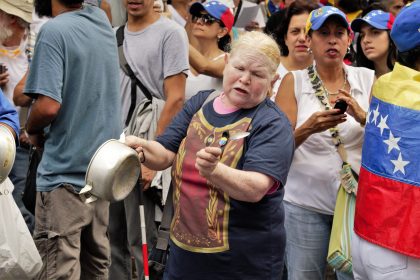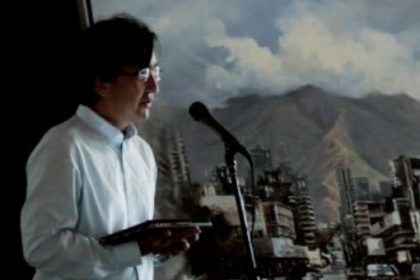By Gabriela Ramirez
The fracture between Chavism and Madurism: in the last session held by the National Assembly, before the unilateral election of the constituent members, we went to the Federal Legislative Palace, the Members of the Parliament Germán Ferrer, Eustoquio Contreras and myself. We were going to notify the parliament of the birth of the parliamentary fraction coming from the PSUV, which opposed to the violation of the National Constitution with the uncontested convocation of a Constituent Assembly.
Some people prevented access to the place with banners of support for the government and, as soon as we approached, they pounced over us, shouting “Traitors! Sold!” Even though just a few days ago we shared militancy. Once the session was over, the Palace was surrounded by approximately one hundred people shouting insults and slogans against the attending Members of the Parliament. It was impossible to cross the backyard from the wing of the hemicycle to the wing of the offices of the Vice Presidency, because they were throwing blunt objects that fell beside the fountain. The attitude of the legislators was of familiarity -all the sessions are the same- and they told me: “They will leave in a while for lunch and we will leave quickly.”
I observed the place that was my place of work for two years as a Member of the Parliament for the Chavism: walls full of blood, carpets and furniture securing the doors to prevent the entry of violent groups. We were only a couple of days away from concluding a cycle of more than a hundred days of protests, popular expressions that had taken to the streets since 31 March, mutating in different ways, with dozens of young people murdered in confusing circumstances.
People on the street
The mobilisations that had begun in a peaceful and spontaneous manner had, at the beginning, a multitudinous presence. The image of the human swell that went to the Ombudsman’s Office, trying to go beyond the military cord was one of them. Hundreds of people suffocated by the effect of the gases and blindly fled to the sides of that cord, but it was impossible to back down because the march was so compacted. The photographic record showed them crossing El Guaire River in direction to Bello Monte. The official response by social networks was reduced at best to silence and, at worst, to mockery. A tweet disseminated at the highest level, sentenced “To El Guaire what is from El Guaire,” implying these people were trash.
The disqualification of any contrary opinion would encompass both locals and strangers. Just a couple of weeks before, the Attorney General had been subject to moral lynching through state media for having labeled sentences 155 and 156 of the Supreme Court of Justice as a rupture of the constitutional thread. The high decision materialised the formal dispossession of attributions to the National Assembly popularly elected in December 2015. It was very clear that this result was not wanted by any of those who belonged to the movement founded by President Chávez, but it was the verdict of the people and our duty was to abide to it. After numerous demonstrations of different signs, the day after the election of the members of the Constituent National Assembly (ANC), the headquarters of the Public Ministry was taken by officials of the Bolivarian National Armed Forces (FANB) who prevented the high official from entering her office.
The steel fist of the governmental gradually closed on the different expressions of discontent, whether by sectors as it was the case of the group of former prosecutors who served during the Chavez government and filed a Nullity Appeal before the Supreme Court or if they expressed in mass mobilisations as those that characterised the first phase. The first one would be entrusted to the institutions subordinated to the interests of the National Executive and the latter to the coercive forces of the State.
The behavior of the uniformed National Guard focused on the use of toxic gases against peaceful demonstrations that claimed their right to march toward the headquarters of the public authorities in Caracas’ Downtown. None of the mobilizations obtained the necessary permits. It was clear that anyone who had the motivation to protest should also assume that, at the end of his walk, would breathe asphyxiating and blinding gases. The majority abandoned the idea of demonstrating because of the danger it implied for their physical integrity and health. Unhappy but worn out, they returned to their homes and the expressions of opposition took a turn.
The cardboard defenders
For the second phase of the protests, tension rose throughout the country. Spotlights of teenagers with their faces covered and homemade shields took were focused at this stage. United in small groups, they took the tear gas bombs with their bare hands to throw them back to the uniformed ones. It was a painful struggle between asymmetric groups that mourned the country with the loss of more than a hundred lives of boys who were beginning to live. The last hours of the 19-year-old Juan Pernalete confronted the Prosecutor’s Office, still led by Luisa Ortega against the Scientific and Criminal Investigations Body (CICPC) under the orders of the government. While the first assured that a tear gas bomb fired at close range was the lethal weapon, the government spokesmen rushed to rule that it was a captive bolt, device used to slaughter cattle. This event revealed that even death could be interpreted for political purposes and the concealment of disproportionate practices perpetrated by uniformed officials that violate human rights.
The interventions deployed by the uniformed officials consisted -in some cases- in the use of tear gas bombs against the bodies of young people who confronted them at the contention checkpoints. The international indications for the use of gases are related to manifestations that become violent and the pumps must be fired at an upward angle in such a way that when they fall, they release the gas. In the Venezuelan case, the intention of the bombs was to cut off and divert the transit of peaceful demonstrations towards the center of Caracas. They were also used at the end of the cycle of protests to dissolve peaceful concentrations, specifically in the Redoma La India de la Vega and in El Paraiso.
Repression invades the home
The third stage of protests was linked to the raid of lower or middle-class housing. Uniformed officers burst into tanks with buildings, generating astonishment throughout the country. Previously the raids on the houses were made with the individualization of the people who would be interrogated or detained. The Residential Complex Los Verdes resisted the siege of the political police for weeks, while other residences suffered material losses with gates demolished by tanks that entered violently. This last phase is part of the most visible involution in terms of police action in the last two decades.
Support for the Chavism cause always implied dialogue and respect for the popular sectors. For that reason, this stage implies a tacit but definitive fracture of the government’s links with society as a whole. The cardinal message conveyed is that it will repress any visible protest or disenchantment that could put at risk the official idyllic narrative that is transmitted by the state media or through the submissive “private” press.
The installation of the Constituent National Assembly (ANC) pacified the rebel focus, due to the loss of confidence that demonstrators had toward the opposition leaders rather than the respect it infused. The alleged constituent assembly replaced in an opaque and unilateral election our sustained effort of collective coexistence, embodied in a text shared by all of us after having validated it in four electoral processes: convocation, approval, reform and amendment: The National Constitution.
The government, incapable of instilling confidence or credibility in the people, opted for an infallible formula: undoing all the opposition from its leaders, something that even Chávez himself could not achieve with his charisma and ability to persuade. Constant allusions to “private talks with the opposition” by the President were the final stitch for the demobilisation of the sectors that asked to defend the Constitution.
Hunger as a catalyst
The challenge with which this brief tour is closed is directly related to the most urgent needs of the population. At the time of writing these lines -beginning of January- 75 looting situations and 311 detainees were counted, as well as the constant siege in various sectors of the country to places -where it is assumed- food is kept. The official response ranges from repression to disqualification of the hungry people by referring to them as terrorists, imprisoning them or else, disappearing from the informative official portals the events that daily appear in different places of our country and that show the needs that the people suffer.
A scarce ingredient -such as meat or chicken- that could defuse the conflict would be provided by a reliable leadership that represents a hope for the country. The consciousness and organisation of the people would be the other possible equation to clear the formula of peace, but hunger is a chain for the stomach and the division of “they and we” in the needed make it impossible for everyone to demand firmly and collectively for a change in the face of those who are leading the country. The repression will persist in its stubborn attempt to contain the irrepressible because the people will continue on the street, claiming their right to survive in what was, just five years ago, the country with the highest income on the continent.
Just like a circular work, the rooting popular movement known as Chavism and that emerged in the late eighties to displace the power of the hunger-generators, today we repeat the worse -maybe in slow-motion- scenes of need and impoverishment. There have not been two or three days of anger, but a rage that keeps growing. The parricides strangle the life of that project, taking it out of the Constitution and the Homeland Plan because it is the only way to perpetrate in power. But just like happened back then, the people will have the last word.
—


